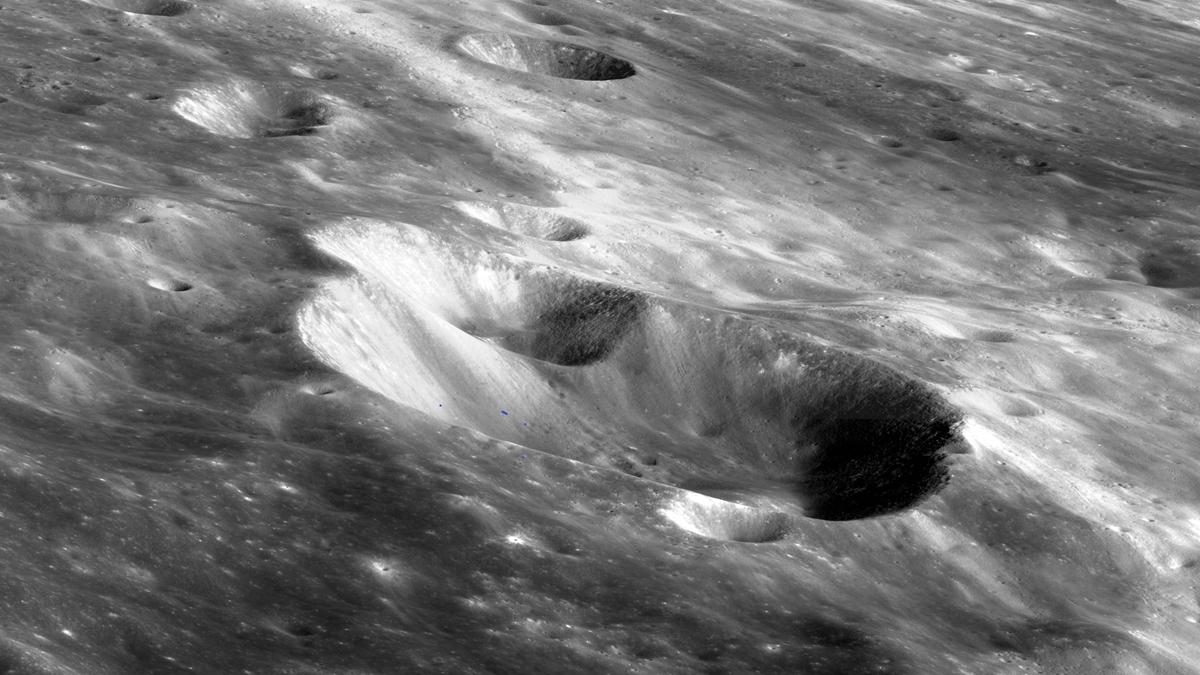Science Wrap: Cyclone Mocha, a new meteorite, and a river on Mars

An intensifying cyclone, a potato-sized meteorite, stunning images of the Moon's craters and an ancient Martian lake dominate this week's science news (photo-DailyO)
This week in science saw the cyclone known as Mocha intensifying around India while the other headlines mostly cover the cosmos. Not only did a Korean rover deliver some stunning images of the Moon's crater but NASA's Perseverance rover has now found the evidence of what seems like an ancient river on Mars, reaffirming the theory that the Red Planet once had water flowing through it.
Back on the Blue Planet, a meteorite crashes through the roof of a New Jersey home. What did the family think of it? They thought the neighbousr were throwing rocks at them!
1- Cyclone Mocha expected to become more severe
Cyclone Mocha has strengthened into a very severe cyclonic storm over the Bay of Bengal, according to the India Meteorological Department (IMD), and is heading towards the Bangladesh-Myanmar coast.
Severe cyclonic storm mocha over bay of bengal #cyclone #bayofbengal #imd #mocha #Storm@DDNewslive @airnewsalerts @moesgoi @ndmaindia pic.twitter.com/cSo2cVoXNz
— India Meteorological Department (@Indiametdept) May 12, 2023
“Now, its moving with a speed of 9km per hour towards north direction,” Indian Meteorological Department scientist Umashankar Das told news agency ANI. It is expected that the incoming cyclone will lead to heavy amounts of rainfall in the Andaman and Nicobar islands along with India's northeastern states.
2- Korean satellite Danuri's Moon photoshoot
South Korea's Danuri spacecraft has sent back detailed photographs of the Moon's craters months after it entered lunar orbit.

The Korea Aerospace Research Institute's (KARI) Korea Pathfinder Lunar Orbiter (KPLO) spacecraft has sent four photographs of the lunar surface as it continues to orbit the Moon. The photographs show not only craters, but also surface features on the Moon that are encased in regolith (lunar soil and dust).

In stunning clarity, the Orbiter showed four craters on Moon - Tsiolkovsky crater, Schrodinger Valley, Wichmann Crater, and the Szilard M Crater.

3- Mars once had a fast-flowing river, new evidence suggests
The Mars rover known as Perseverance Mars photographed a mosaic of a hill known as "Pinestand." at the Jazero Crater. Scientists believe the tall sedimentary strata stacked on top of each other here were produced by a deep, swift-moving river.
New images from @NASAPersevere may show evidence of what was once a wild and deep river on Mars. The observations are leading scientists to rethink how ancient water once flowed on the Red Planet. https://t.co/9XntSzDCtI pic.twitter.com/zel8bKx8X0
— NASA (@NASA) May 11, 2023
According to NASA, understanding these aqueous ecosystems could benefit scientists in their search for clues of ancient microbial life trapped in Martian rock.
4- Meteorite crashes into an American home
From the dinosaurs' possible extinction to sci-fi films like Armageddon, meteorites and asteroids can creep out humans. After all, no one would want to be knocked out with a space rock falling on their head without any warning. A home in Hopewell, New Jersey similarly witnessed a meteorite on Monday (May 8), a warm, black potato-sized chunk that they initially thought of as a rock that the neighbours threw. Causing a bit of a dent in the roof, the meteorite was small enough to hardly cause any damage.
A meteorite struck a house in New Jersey! pic.twitter.com/dhVUucUFOj
— The Daily Space (@TheDailySpace3) May 10, 2023
The stony meteorite has been identified as a chondrite meteorite. The study of these meteorites will be able to help scientists in understanding the origins of the Solar System as they are often formed when various particles of dust and accumulated together in the early years of the Solar System to form primitive asteroids.

